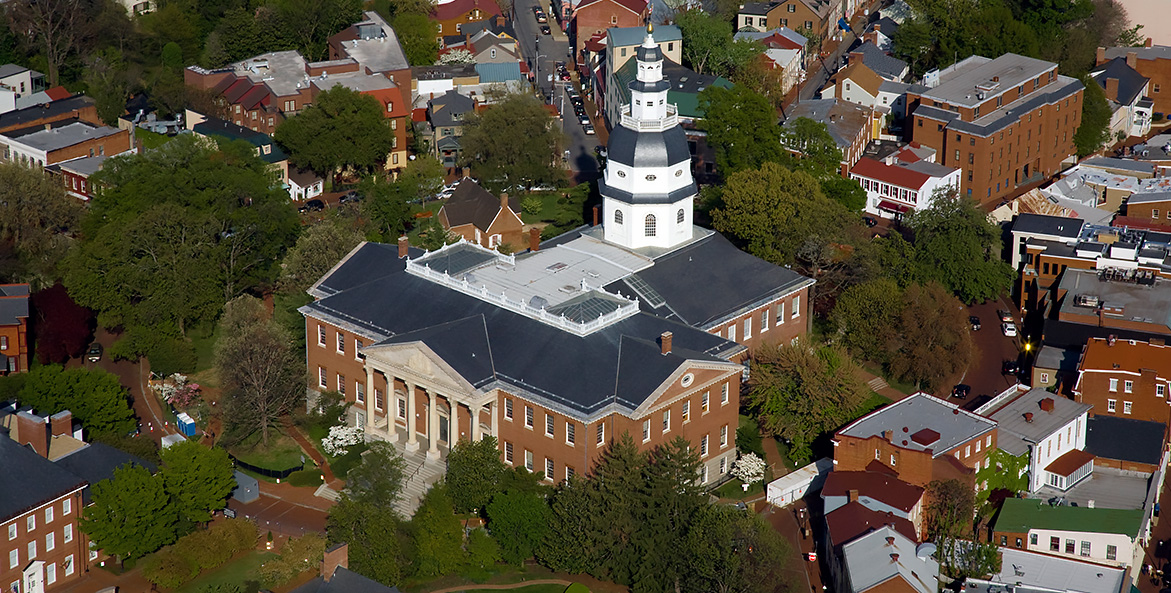A version of this op-ed was originally published in Maryland Matters. It has been modified to reflect Governor Moore’s budget proposal announced on Jan. 15, 2025.
Governor Wes Moore and legislative leaders have an important, though unenviable, task ahead for the remainder of the 2025 General Assembly session: meeting Maryland’s ambitious goals for environmental progress and climate resiliency while navigating a $3 billion budget shortfall. With the release of the Governor’s preliminary budget plan last week, the real work of the session begins. We call on the Governor and General Assembly to keep their commitments and protect investments in our environment.
In December, Governor Moore was re-elected to chair the Chesapeake Bay Program Executive Council and recommitted to our shared Bay cleanup goals. The Governor also announced his intention to sponsor a “Bay legacy bill” focused on oyster aquaculture, regenerative agriculture, water quality monitoring, and environmental project permitting.
A few weeks later, the Maryland Department of the Environment (MDE) released its agency climate plan, which includes 100 priority actions across all state agencies to reduce greenhouse gas emissions and support a green economy. These plans are informed by the goals set by the General Assembly in the landmark 2022 Climate Solutions Now Act.
These promises are valuable and exciting. However, to make meaningful progress on the Chesapeake Bay's health and our communities' resilience, they must be backed up with strong action.
In light of the tremendous fiscal challenge ahead, and the uncertainty of environmental policies under the new federal administration, it is more critical than ever that this year’s budget delivers on Maryland’s commitments to the Bay and our watershed’s natural resources.
Historically, during tight budget years, Governors and legislators have looked to close deficits by borrowing from or reallocating funding sources that support environmental programs. Doing so again at this pivotal time for Bay clean up and climate action could jeopardize the fragile progress we have made.
Investments in clean water and air are investments in Marylanders—our health, our jobs, and our ways of life. Programs like the Bay Restoration Fund, Program Open Space, the Chesapeake and Atlantic Coastal Bays Trust Fund, and the Maryland Agricultural Cost Share Program (MACS) are key to sustaining a healthy environment, thriving communities, productive farms, and the Bay. These environmental programs are smart investments that grow Maryland’s economy.
For example, reducing nutrient runoff from farms is one of the most effective and efficient ways to clean the Bay. Every dollar spent on further conservation practices in the watershed would, on average, return an estimated $1.75, including increased sales and earnings for local businesses and workers. Many farmers rely on MACS programs to leverage their own private investments in environmentally-friendly farm practices that reduce soil loss, improve habitat, and increase farm sustainability.
Through MACS, we’ve made tremendous progress reducing nitrogen, phosphorus, and sediment pollution entering local rivers and streams. We must keep the momentum going. Fully funding farm pollution-reduction programs would inject $655 million annually into the region’s economy, according to CBF’s 2022 report, Agricultural Conservation Practices: Clean Water and Climate Smart Investments. The farm practices supported by this investment are good for the Bay, good for farmers’ bottom line, and support local food production for the more than 30 percent of Marylanders who struggle with food insecurity.
But the economic benefits don’t stop at the water’s edge. The Bay’s oyster population is not just improving water quality, but is also the bedrock of a culturally and economically important Maryland industry. Each year, Maryland’s seafood industry contributes nearly $600 million to the state's economy. The oyster aquaculture industry alone contributed approximately $13.3 million to Maryland’s economy in 2023. The aquaculture industry has grown by about 24 percent per year since 2012, according to a 2020 CBF analysis, hitting record harvests each year. With sustained support and some smart permitting reforms, that trend is poised to keep growing.
In its new climate plan, MDE says it’ll advance policies and programs that “maximize positive environmental, economic and human health benefits for Marylanders.” From a public health perspective, protecting air and water quality can save lives and reduce economic stress for families. In the U.S., an estimated 20,000 heart attacks are caused per year from coal-fired power plant pollution. Living downwind of these plants can be like living with a smoker and induce conditions like asthma which cost the U.S. economy more than $80 million annually. MDE's climate plan and promise to reduce the state’s greenhouse gas emissions by 60 percent by 2031 and achieve 100 percent clean energy by 2035, would be a tremendous achievement towards cleaner air and human health.
We know many tough budget decisions lie ahead. We are optimistic about the Governor’s budget plan and the recognition that investments in oyster recovery, farm stewardship, and climate resiliency cannot wait. They are not just good for the Bay and our communities, but make good financial sense, too. Governor Moore and legislative leadership have made big commitments to cleaner water, air, and soil. Now is the time to turn those promises into progress for the Chesapeake Bay.




